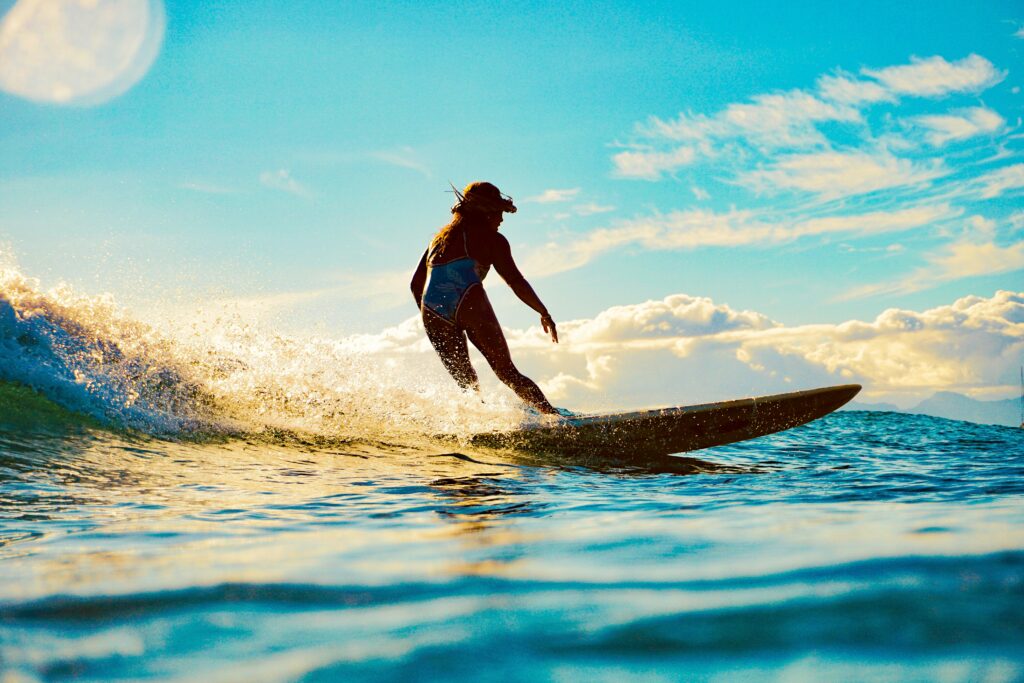Surfing is not just a sport; it’s a way of life. For surfers, the ocean is not only their playground but also their sanctuary. However, the very activity that brings joy and connection to nature also poses a significant threat to the environment. From pollution to plastic waste, the impact of surfing on the ocean ecosystem cannot be ignored. In this article, we’ll delve into the environmental footprint of surfing, exploring the sources of pollution and plastic waste, and discussing potential solutions to mitigate these issues.
Chemical Pollution from Surfboard Manufacturing
Surfboard manufacturing, while integral to the sport, has a significant environmental impact due to chemical pollution. Traditional surfboard manufacturing processes involve the extensive use of polyurethane foam blanks, fiberglass cloth, and polyester or epoxy resin. These materials release harmful chemicals into the environment during production and disposal stages.
Harmful Chemicals in Manufacturing Process
During the shaping and glassing of surfboards, volatile organic compounds (VOCs) are released into the atmosphere. These compounds, including styrene and toluene found in polyester resins, contribute to air pollution and pose health risks to workers and nearby communities. Additionally, the production of polyurethane foam blanks involves the use of toxic isocyanates, which can cause respiratory issues and skin irritation.
Impact on Waterways and Ecosystems
Chemicals used in surfboard manufacturing can leach into waterways through runoff during production or disposal. Residual resin, foam dust, and other waste materials contaminate water sources, affecting aquatic life and ecosystems. Furthermore, the disposal of old or damaged surfboards often involves burying or burning them, releasing toxins into the soil and air.
Sustainable Alternatives and Solutions
To address chemical pollution from surfboard manufacturing, there’s a growing push for sustainable alternatives and cleaner production methods. Bio-based resins derived from renewable sources such as plant oils and recycled materials offer promising alternatives to traditional petroleum-based resins. Additionally, manufacturers are exploring closed-loop systems and recycling programs to minimize waste and reduce environmental impact.
Microplastics from Wetsuits and Surfboard Materials
In addition to chemical pollution, microplastics from wetsuits and surfboard materials contribute to environmental degradation, posing threats to marine life and ecosystems.
Shedding of Microplastics
Wetsuits, typically made from neoprene, and surfboard materials like foam blanks and fiberglass release microplastics through wear and tear during use. As surfers paddle, ride waves, and fall, these materials degrade, shedding tiny plastic particles that enter the ocean.
Impact on Marine Life
Microplastics pose significant risks to marine life, with small organisms often mistaking them for food. Once ingested, these particles can accumulate in the digestive systems of marine animals, leading to blockages, internal injuries, and starvation. Additionally, microplastics can absorb and transport harmful pollutants, further endangering marine ecosystems.
Mitigation Strategies
Efforts to mitigate microplastic pollution from wetsuits and surfboard materials include the development of alternative materials and improved manufacturing processes. Innovations such as recycled neoprene and bio-based foams offer eco-friendly alternatives to conventional materials. Furthermore, raising awareness among surfers about proper wetsuit and equipment care can help minimize microplastic release into the ocean.
Effects on Marine Life and Ecosystems
Marine life and coastal ecosystems face significant threats from various sources of pollution and human activities associated with surfing. These effects can have long-lasting consequences on biodiversity and the health of marine environments.
Harm to Marine Animals
The presence of pollution and plastic waste from surfing activities can cause direct harm to marine animals, leading to injuries, entanglement, and ingestion of harmful materials.
Ingestion of Plastic Debris
Marine animals, including seabirds, turtles, fish, and marine mammals, often mistake plastic debris for food. Small plastic particles, such as microplastics shed from wetsuits and surfboard materials, can be ingested by filter feeders and plankton, entering the marine food chain. This ingestion can result in internal injuries, digestive blockages, malnutrition, and even death.
Entanglement in Debris
Discarded fishing gear, plastic bags, and other debris pose entanglement risks to marine animals. Seals, sea lions, turtles, and seabirds may become ensnared in abandoned fishing nets or trapped by plastic packaging, leading to injuries, suffocation, or drowning. These entanglements can impair mobility, interfere with feeding behaviors, and ultimately threaten the survival of affected species.
Disruption of Coastal Ecosystems
Pollution and plastic waste from surfing activities can disrupt coastal ecosystems, affecting biodiversity, habitat stability, and ecosystem services.
Habitat Degradation
The accumulation of plastic waste along coastlines and in marine environments can degrade coastal habitats such as beaches, estuaries, and coral reefs. Plastic debris can smother benthic habitats, alter sediment composition, and interfere with the nesting and hatching success of sea turtles and shorebirds. Additionally, invasive species may hitchhike on plastic debris, introducing new ecological pressures to native ecosystems.
Chemical Contamination
Pollutants from surfboard manufacturing, including VOCs, heavy metals, and plasticizers, can leach into coastal waters, contaminating sediments and impacting water quality. These chemicals can disrupt physiological processes in marine organisms, impair reproduction, and weaken immune responses. Moreover, contaminated sediments may serve as reservoirs for persistent pollutants, posing ongoing threats to marine life and ecosystem health.




